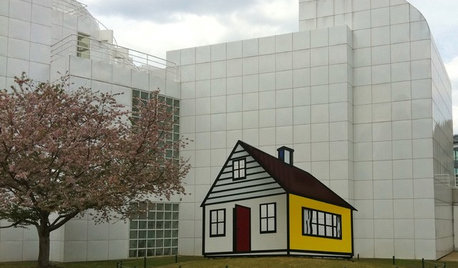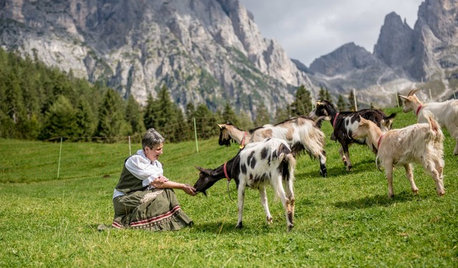I got my 22 fruit trees from Willis Orchard on Thursday, April 9. I'd ordered them March 16. I'd ordered the smallest size categories they had to keep down costs. The trees I received were all at the high end of their size. They didn't have much in the way of roots. I knew they'd be bare root, but this was really skeletal. I've never had mail-order bare root trees, so I don't know if this is normal. They didn't have much in the way of leaves either, but I'd expected them to be dormant. It looked like some of them had begun to leaf out, but the leaves had been roughly stripped off. A few of the trees looked a bit dessicated with the bark sucked close to the wood.
I couldn't plant them Thursday, so I did Friday. I just left them in their box until then, as it was cool outside. My hopes to get a fence post auger/digger had not panned out, so I was left digging holes with a shovel. The ground out here is really, really hard. I found that the first 2-4 inches is fill dirt, a sort of light chestnut colored, sandy, rocky stuff that becomes rock hard when dry. The next 2-4 inches is black clay, which is rock hard all the time. Looks fertile, though. Under that is a rocky, orange-colored clayey material. My holes were about 8-12" deep. I was pretty unhappy about how compacted the soil was. I don't know how the trees will work out in it.
I put a five gallon bucket of leaf compost in the hole with each tree. I figure it will hold moisture better than the native soil and allow the tree to get new roots built up without having to fight the rock-hard native stuff to get a grip. Then I tamped them in by stepping around them and watered them good. The directions say to water daily for the first two weeks.
I wonder when I'll be able to tell which ones are alive and which aren't? I suppose I should save the invoice in case there's a problem. Though I've heard the only way I can get a refund is to send back the dead tree with a copy of the invoice, at my cost and then they'll send a replacement.
I'm glad I have them in this spring instead of having to wait until next year. If they take, then maybe next year I'll have a little fruit. I think I need to make little rings around the trees to catch water. And I need to get some mulch. If it doesn't rain too much, I could do that next week.










tulsabrian
gamebirdOriginal Author
Related Professionals
Jackson Landscape Contractors · Brookside Landscape Contractors · Chesapeake Ranch Estates Landscape Contractors · Cupertino Landscape Contractors · Emmaus Landscape Contractors · Estelle Landscape Contractors · Nutley Landscape Contractors · West Covina Landscape Contractors · Four Corners Landscape Contractors · Brentwood Decks, Patios & Outdoor Enclosures · Cincinnati Decks, Patios & Outdoor Enclosures · Freehold Decks, Patios & Outdoor Enclosures · Grain Valley Decks, Patios & Outdoor Enclosures · La Palma Decks, Patios & Outdoor Enclosures · Monroe Decks, Patios & Outdoor EnclosuresOkiedawn OK Zone 7
tulsabrian
Okiedawn OK Zone 7
gamebirdOriginal Author
Okiedawn OK Zone 7
tulsabrian
gamebirdOriginal Author
Okiedawn OK Zone 7
gamebirdOriginal Author
gamebirdOriginal Author
tulsabrian
gamebirdOriginal Author
tulsabrian
Okiedawn OK Zone 7
okiegardener
Okiedawn OK Zone 7
gamebirdOriginal Author
tulsabrian
gamebirdOriginal Author
jimbowhit
Okiedawn OK Zone 7
gamebirdOriginal Author
Okiedawn OK Zone 7
fireant156
brandon7 TN_zone7
elkwc
brandon7 TN_zone7
Sue Hughes
Sue Hughes